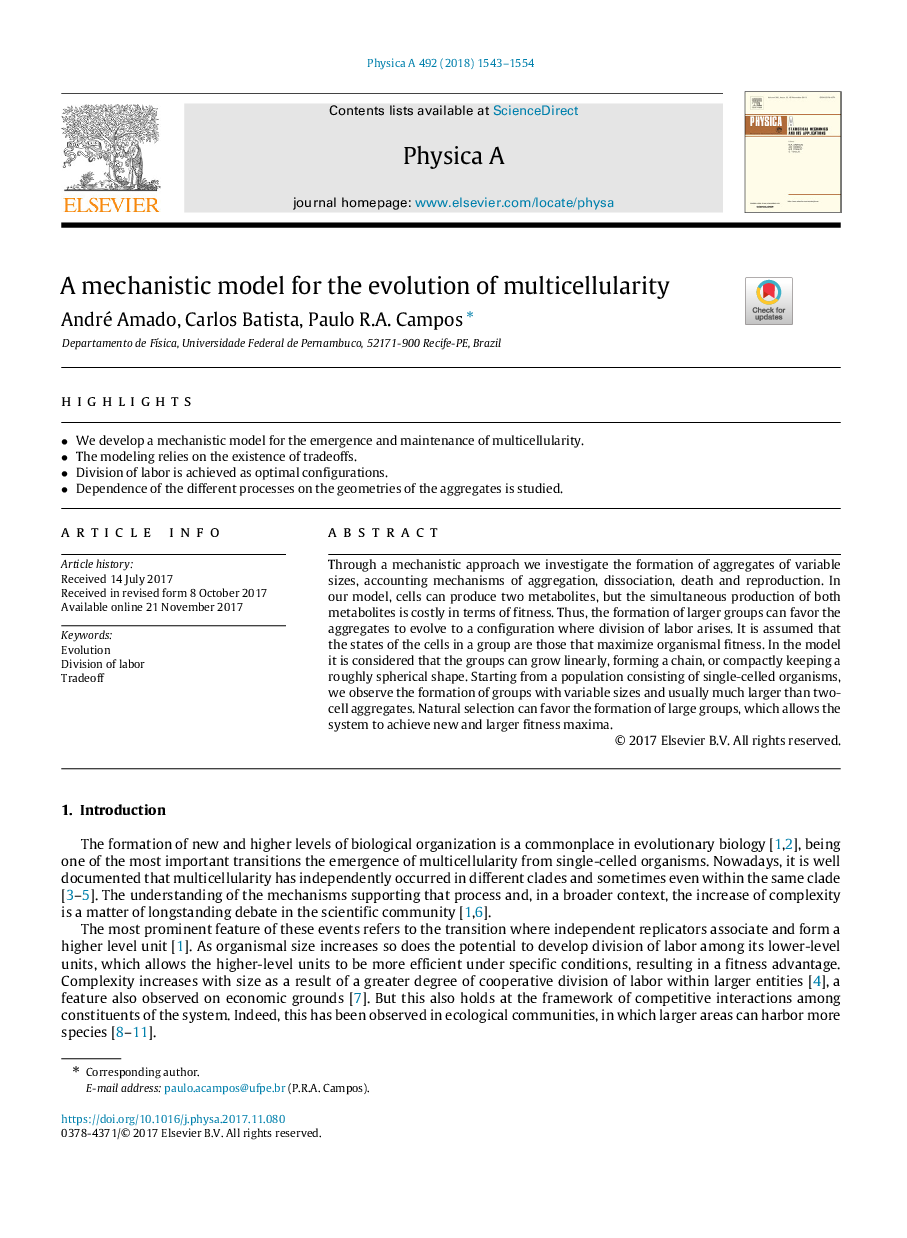| Article ID | Journal | Published Year | Pages | File Type |
|---|---|---|---|---|
| 7376520 | Physica A: Statistical Mechanics and its Applications | 2018 | 12 Pages |
Abstract
Through a mechanistic approach we investigate the formation of aggregates of variable sizes, accounting mechanisms of aggregation, dissociation, death and reproduction. In our model, cells can produce two metabolites, but the simultaneous production of both metabolites is costly in terms of fitness. Thus, the formation of larger groups can favor the aggregates to evolve to a configuration where division of labor arises. It is assumed that the states of the cells in a group are those that maximize organismal fitness. In the model it is considered that the groups can grow linearly, forming a chain, or compactly keeping a roughly spherical shape. Starting from a population consisting of single-celled organisms, we observe the formation of groups with variable sizes and usually much larger than two-cell aggregates. Natural selection can favor the formation of large groups, which allows the system to achieve new and larger fitness maxima.
Keywords
Related Topics
Physical Sciences and Engineering
Mathematics
Mathematical Physics
Authors
André Amado, Carlos Batista, Paulo R.A. Campos,
